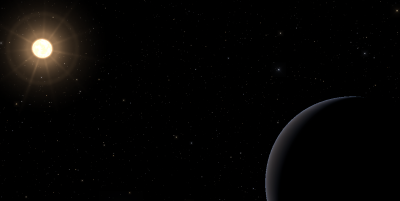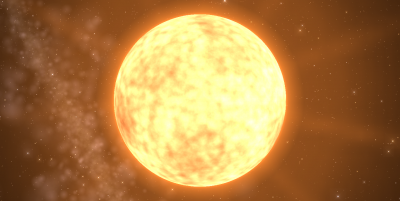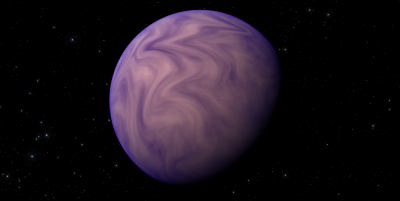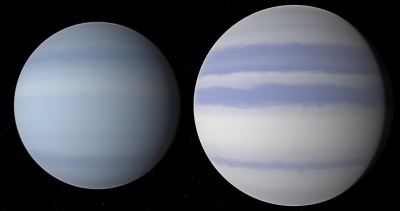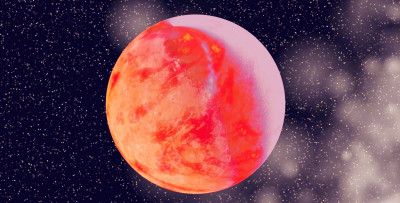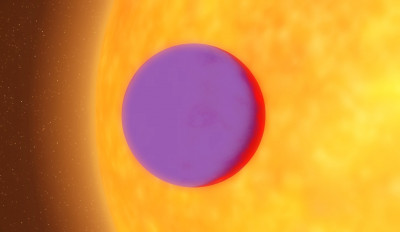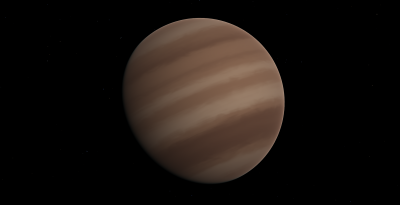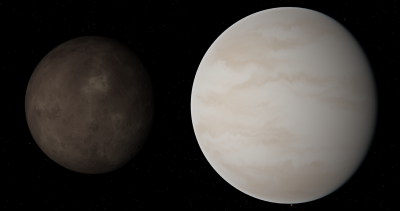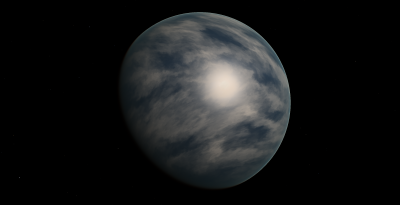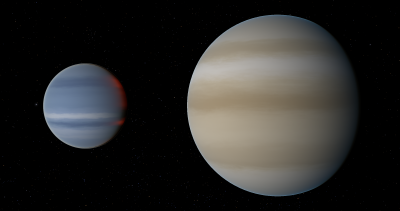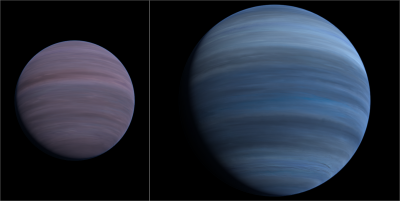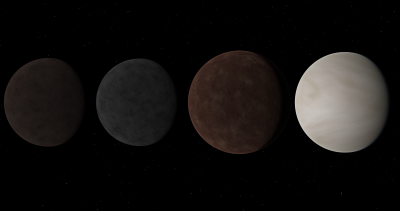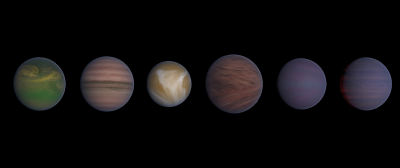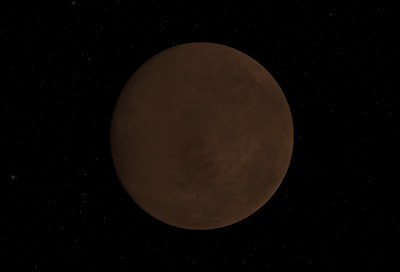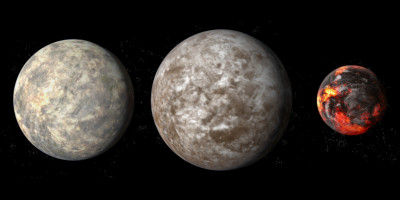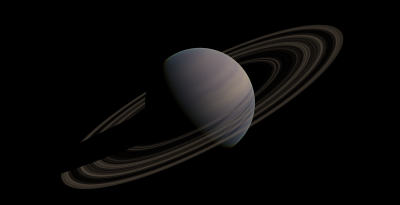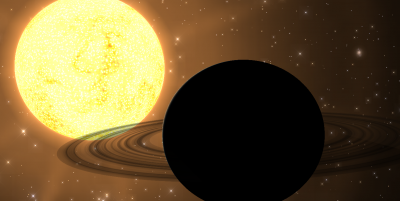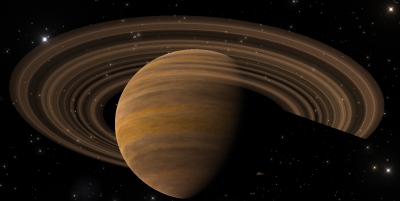Project Sisyphus - Texturing/painting every exoplanet known
-
Topic authorGurren Lagann
- Posts: 429
- Joined: 31.01.2018
- Age: 17
- With us: 6 years 3 months
- Location: State of Rio de Janeiro, Brazil
Nu Octanis
WD or not, its still νο.
Barnard's Stellar Troubles
Bringing fake worlds since 1963!
Hey look, updates of two extremely annoying systems! Fun...
Downloads:
WD or not, its still νο.
Barnard's Stellar Troubles
Bringing fake worlds since 1963!
Hey look, updates of two extremely annoying systems! Fun...
Downloads:
"The tomorrow we're trying to reach is not a tomorrow you had decided on!"
- Simon the Digger
"Nothing is impossible for me, as long I'm determinated to keep moving forward!"
"If other people aren't going to do it, I'm going to do it myself!"
- Me (Gurren)
Current major projects:
- Aur Cir
- Cel+
- Project Sisyphus
- Populating the Local Group
- An galaxy generator
- Simon the Digger
"Nothing is impossible for me, as long I'm determinated to keep moving forward!"
"If other people aren't going to do it, I'm going to do it myself!"
- Me (Gurren)
Current major projects:
- Aur Cir
- Cel+
- Project Sisyphus
- Populating the Local Group
- An galaxy generator
GJ 1177
a cool super-Jupiter on a year long orbit
the sole super-Jupiter of GJ 1177 B
GJ 1177, aka HD 120036, is a binary system comprised of two K-type main sequence stars located about 47.65 lightyears from the solar system. the secondary component to the binary hosts a cool super-Jupiter on a year long orbit
[Download] (3.53 MB)
a cool super-Jupiter on a year long orbit
the sole super-Jupiter of GJ 1177 B
GJ 1177, aka HD 120036, is a binary system comprised of two K-type main sequence stars located about 47.65 lightyears from the solar system. the secondary component to the binary hosts a cool super-Jupiter on a year long orbit
[Download] (3.53 MB)
TOI-199
a G-type star with temperate sub-Jupiter's
Both planets of TOI-199 A
TOI-199 is a binary system composed of a G-type main sequence star and a red dwarf located about 331.81 lightyears from the solar system. The primary component hosts a single, transiting, low density sub-Jupiter with an intermediate period orbit followed by another non-transiting sub-Jupiter within it's habitable zone. Both planets are in a 2:1 MMR.
[Download] (8.05 MB)
a G-type star with temperate sub-Jupiter's
Both planets of TOI-199 A
TOI-199 is a binary system composed of a G-type main sequence star and a red dwarf located about 331.81 lightyears from the solar system. The primary component hosts a single, transiting, low density sub-Jupiter with an intermediate period orbit followed by another non-transiting sub-Jupiter within it's habitable zone. Both planets are in a 2:1 MMR.
[Download] (8.05 MB)
- Galaxy-Leaper
- Posts: 17
- Joined: 02.09.2023
- With us: 8 months 7 days
K2-22
The hellish world lasted less than 9 hours a year, to the point where its surface completely melted, but on its back it was very cold.
The hellish world lasted less than 9 hours a year, to the point where its surface completely melted, but on its back it was very cold.
- Attachments
-
 K2-22.zip
K2-22.zip- (21.7 MiB) Downloaded 107 times
- Galaxy-Leaper
- Posts: 17
- Joined: 02.09.2023
- With us: 8 months 7 days
HAT-P-2c
Adding planets missing from the HAT-P-2 system, to be precise, the newly discovered planet HAT-P-2 c, is a boring, cold gas giant planet.
Adding planets missing from the HAT-P-2 system, to be precise, the newly discovered planet HAT-P-2 c, is a boring, cold gas giant planet.
- Attachments
-
 HAT-P-2c.zip
HAT-P-2c.zip- (2.88 MiB) Downloaded 101 times
TOI-4860
a hot Jupiter and a possible cold Jupiter with a red dwarf host
the sole confirmed planet of TOI-4860
TOI-4860 is a red dwarf located about 262.3 lightyears from the solar system. A single transiting hot Jupiter with a low density orbits this star every one and a half days. An additional candidate planet was spotted in this system: a cold Jupiter on a highly eccentric, year long orbit.
TOI-4860's candidate planet
[Download Confirmed Planet] (3.01 MB)
[Download Unconfirmed Planet] (4.07 MB)
a hot Jupiter and a possible cold Jupiter with a red dwarf host
the sole confirmed planet of TOI-4860
TOI-4860 is a red dwarf located about 262.3 lightyears from the solar system. A single transiting hot Jupiter with a low density orbits this star every one and a half days. An additional candidate planet was spotted in this system: a cold Jupiter on a highly eccentric, year long orbit.
TOI-4860's candidate planet
[Download Confirmed Planet] (3.01 MB)
[Download Unconfirmed Planet] (4.07 MB)
TOI-1634
two planets of the same mass at varying distances
Both worlds of TOI-1634
TOI-1634 is a binary system comprised of two red dwarfs located about 115.17 lightyears from the solar system. the primary component to the binary hosts two planets of (likely) different compositions but that same mass: a short-period, hot super-Earth and a mini-Neptune mass planet on a 100 day orbit near the outer habitable zone of it's host.
[Download] (16.58 MB)
Gliese 880
a candidate mini-Neptune orbiting a nearby star
The sole candidate planet of Gliese 880, depicted here as a habitable oceanic
Gliese 880 is a nearby red dwarf star located about 22.4 lightyears form the solar system. in 2019, a possible mini-Neptune mass planet on a month long orbit through it's hosts inner habitable zone was detected. though no further studies have reaffirmed or refuted the planet's existence so far.
This addon depicts this planet as a habitable oceanic planet though it could be a variety of different compositions.
[Download] (19.45 MB)
two planets of the same mass at varying distances
Both worlds of TOI-1634
TOI-1634 is a binary system comprised of two red dwarfs located about 115.17 lightyears from the solar system. the primary component to the binary hosts two planets of (likely) different compositions but that same mass: a short-period, hot super-Earth and a mini-Neptune mass planet on a 100 day orbit near the outer habitable zone of it's host.
[Download] (16.58 MB)
Gliese 880
a candidate mini-Neptune orbiting a nearby star
The sole candidate planet of Gliese 880, depicted here as a habitable oceanic
Gliese 880 is a nearby red dwarf star located about 22.4 lightyears form the solar system. in 2019, a possible mini-Neptune mass planet on a month long orbit through it's hosts inner habitable zone was detected. though no further studies have reaffirmed or refuted the planet's existence so far.
This addon depicts this planet as a habitable oceanic planet though it could be a variety of different compositions.
[Download] (19.45 MB)
Last edited by Karistus_ on 20.12.2023, 03:45, edited 2 times in total.
TOI-1694
a hot-Neptune with a temperate giant companion
Both worlds of TOI-1694
TOI-1694 is a K-type main sequence star located about 405.65 lightyears from the solar system. Two planets orbit this star a hot Neptune-sized with a low density and a non-transiting gas giant on a year long orbit within TOI-1694's habitable zone.
[Download] (11.9 MB)
a hot-Neptune with a temperate giant companion
Both worlds of TOI-1694
TOI-1694 is a K-type main sequence star located about 405.65 lightyears from the solar system. Two planets orbit this star a hot Neptune-sized with a low density and a non-transiting gas giant on a year long orbit within TOI-1694's habitable zone.
[Download] (11.9 MB)
-
Topic authorGurren Lagann
- Posts: 429
- Joined: 31.01.2018
- Age: 17
- With us: 6 years 3 months
- Location: State of Rio de Janeiro, Brazil
HD 102365 and GJ 3988
Nearby Exoplanets's end... for now
Tonight on arXiv: 2 new planets around Teegarden's Star using CARMENES GTO and Legacy-Plus
Awaiting for that just because all sub-10 pc planets are done!
Download:
Nearby Exoplanets's end... for now
Tonight on arXiv: 2 new planets around Teegarden's Star using CARMENES GTO and Legacy-Plus
Awaiting for that just because all sub-10 pc planets are done!
Download:
"The tomorrow we're trying to reach is not a tomorrow you had decided on!"
- Simon the Digger
"Nothing is impossible for me, as long I'm determinated to keep moving forward!"
"If other people aren't going to do it, I'm going to do it myself!"
- Me (Gurren)
Current major projects:
- Aur Cir
- Cel+
- Project Sisyphus
- Populating the Local Group
- An galaxy generator
- Simon the Digger
"Nothing is impossible for me, as long I'm determinated to keep moving forward!"
"If other people aren't going to do it, I'm going to do it myself!"
- Me (Gurren)
Current major projects:
- Aur Cir
- Cel+
- Project Sisyphus
- Populating the Local Group
- An galaxy generator
HD 215152
short period super-Earth collection
all four super-Earths of HD 215152
HD 215152, aka GJ 4291, is a K-type main sequence star located about 70.39 lightyears from the solar system. The star is currently know to host four super-Earths in a compact system.
[Download] (47.25 MB)
Updated: TOI-1266
short period super-Earth collection
all four super-Earths of HD 215152
HD 215152, aka GJ 4291, is a K-type main sequence star located about 70.39 lightyears from the solar system. The star is currently know to host four super-Earths in a compact system.
[Download] (47.25 MB)
Updated: TOI-1266
Last edited by Karistus_ on 20.12.2023, 03:41, edited 1 time in total.
- Trolligi 112477
- Posts: 252
- Joined: 18.04.2020
- Age: 16
- With us: 4 years
- Location: London
AC Herculis
AC Herculis
A planetary signature around a dying post-AGB star
This is the first potential planet found orbiting a post-AGB star. It's also the first potential polar circumbinary planet.
I added 13 fictional moons as well (mainly for my video on the subject: https://www.youtube.com/watch?v=FfhfQ0t2kXQ )
Credits to Steve Bowers for that beautiful gas giant texture
Download
A planetary signature around a dying post-AGB star
This is the first potential planet found orbiting a post-AGB star. It's also the first potential polar circumbinary planet.
I added 13 fictional moons as well (mainly for my video on the subject: https://www.youtube.com/watch?v=FfhfQ0t2kXQ )
Credits to Steve Bowers for that beautiful gas giant texture
Download
Last edited by Trolligi 112477 on 07.01.2024, 11:15, edited 1 time in total.
no more science papers
- Galaxy-Leaper
- Posts: 17
- Joined: 02.09.2023
- With us: 8 months 7 days
HD 110067
HD 110067 is located in the northern part of the constellation Coma Berenices, approximately 100 light-years away from the solar system. It has six planets with radii ranging from 1.94 to 2.85 times the radius of Earth. Their orbital periods from inner to outer layers are 9.11 days, 13.67 days, 20.52 days, 30.79 days, 41.06 days, and 54.77 days, respectively. This means that the resonance of these six planets from inside out is 3:2, 3:2, 3:2, 4:3, and 4:3. In the HD 110067 system, for every 1 revolution of the outermost planet, the innermost planet will rotate 6 times
Update completed, Thank ParticleGrasp
HD 110067 is located in the northern part of the constellation Coma Berenices, approximately 100 light-years away from the solar system. It has six planets with radii ranging from 1.94 to 2.85 times the radius of Earth. Their orbital periods from inner to outer layers are 9.11 days, 13.67 days, 20.52 days, 30.79 days, 41.06 days, and 54.77 days, respectively. This means that the resonance of these six planets from inside out is 3:2, 3:2, 3:2, 4:3, and 4:3. In the HD 110067 system, for every 1 revolution of the outermost planet, the innermost planet will rotate 6 times
Update completed, Thank ParticleGrasp
- Attachments
-
 HD 110067.zip
HD 110067.zip- (18.06 MiB) Downloaded 109 times
Last edited by Galaxy-Leaper on 24.12.2023, 06:13, edited 2 times in total.
- ParticleGrasp
- Posts: 10
- Joined: 02.08.2010
- With us: 13 years 9 months
- Trolligi 112477
- Posts: 252
- Joined: 18.04.2020
- Age: 16
- With us: 4 years
- Location: London
Updated Kepler-1513 - I got rid of the exomoon and added the more likely outer saturn-mass planet
viewtopic.php?p=160131#p160131
viewtopic.php?p=160131#p160131
no more science papers
Kepler-462
two Neptune-sized planets with an unusually massive inner companion
Both worlds of Kepler-462
Kepler-462, aka KOI-89, is an oblate A-type main sequence star located about 1979.10 light-years from the solar system. Two planets are currently known to orbit this star, both around the size of Neptune, one on an intermediate period orbit and the other on a long period orbit. the outer planet experiences strong TTVs while the inner one shows little. This could be indicative of a very high mass inner planet with a mass greater than or equal to 20 Me, or another planet on a longer orbit. While both conclusions can explain Kepler-462 c's strong TTVs, current understandings slightly prefer a two-planet model, with highly unconstrained masses for both planets.
[Download] (18.11 MB)
two Neptune-sized planets with an unusually massive inner companion
Both worlds of Kepler-462
Kepler-462, aka KOI-89, is an oblate A-type main sequence star located about 1979.10 light-years from the solar system. Two planets are currently known to orbit this star, both around the size of Neptune, one on an intermediate period orbit and the other on a long period orbit. the outer planet experiences strong TTVs while the inner one shows little. This could be indicative of a very high mass inner planet with a mass greater than or equal to 20 Me, or another planet on a longer orbit. While both conclusions can explain Kepler-462 c's strong TTVs, current understandings slightly prefer a two-planet model, with highly unconstrained masses for both planets.
[Download] (18.11 MB)
- Trolligi 112477
- Posts: 252
- Joined: 18.04.2020
- Age: 16
- With us: 4 years
- Location: London
SPECULOOS-3
SPECULOOS-3
A newly discovered Earth-sized world orbiting a nearby red dwarf
Credit goes to cubicApocalypse for the beautiful textures
A newly discovered Earth-sized world orbiting a nearby red dwarf
Credit goes to cubicApocalypse for the beautiful textures
no more science papers
HD 134319
a molten super-Earth in a triple-star system
the sole confirmed planet of HD 134319
HD 134319, aka TOI-1860 and IU Draconis, is a triple-star system consisting of a G-type main-sequence star and two red dwarfs. a sole very hot super-Earth orbits around the primary star
[Download] (21.1 MB)
Recent Updates (since i forgot to mention them earlier):
LTT 3780
TOI-1136
Kepler-454
a molten super-Earth in a triple-star system
the sole confirmed planet of HD 134319
HD 134319, aka TOI-1860 and IU Draconis, is a triple-star system consisting of a G-type main-sequence star and two red dwarfs. a sole very hot super-Earth orbits around the primary star
[Download] (21.1 MB)
Recent Updates (since i forgot to mention them earlier):
LTT 3780
TOI-1136
Kepler-454
- Galaxy-Leaper
- Posts: 17
- Joined: 02.09.2023
- With us: 8 months 7 days
HD 63433
HD 63433, located approximately 73.1 light-years away from us, is a star with a spectral type of G. Its mass is 0.99 times that of the Sun and its radius is 0.912 times that of the Sun. It is surrounded by three planets of different sizes, with planets c and b having larger radii and masses than Earth, and planet d having a volume similar to Earth
Note:They are all 8k textures
HD 63433, located approximately 73.1 light-years away from us, is a star with a spectral type of G. Its mass is 0.99 times that of the Sun and its radius is 0.912 times that of the Sun. It is surrounded by three planets of different sizes, with planets c and b having larger radii and masses than Earth, and planet d having a volume similar to Earth
Note:They are all 8k textures
- Attachments
-
 HD 63433.zip
HD 63433.zip- (129.99 MiB) Downloaded 127 times
OGLE-2011-BLG-0173L
a small star host to a distant sub-Saturn mass planet
the sole known world the orbits OGLE-2011-BLG-0173L
OGLE-2011-BLG-0173L is a distant red dwarf located about 21,200 lightyears from the solar system, near the galactic core. This star is known to host a single sub-Saturn mass planet at around 10 AU from the host, found through microlensing.
[Download] (5.28 MB)
a small star host to a distant sub-Saturn mass planet
the sole known world the orbits OGLE-2011-BLG-0173L
OGLE-2011-BLG-0173L is a distant red dwarf located about 21,200 lightyears from the solar system, near the galactic core. This star is known to host a single sub-Saturn mass planet at around 10 AU from the host, found through microlensing.
[Download] (5.28 MB)
-
Topic authorGurren Lagann
- Posts: 429
- Joined: 31.01.2018
- Age: 17
- With us: 6 years 3 months
- Location: State of Rio de Janeiro, Brazil
HD 36384
A pulsating beacon of hope
Pulsation period: 586 days
The first (i think) of many regular, periodic pulsating variables with exoplanets...
Hopefully many more will be discovered over time.
Download:
A pulsating beacon of hope
Pulsation period: 586 days
The first (i think) of many regular, periodic pulsating variables with exoplanets...
Hopefully many more will be discovered over time.

Download:
"The tomorrow we're trying to reach is not a tomorrow you had decided on!"
- Simon the Digger
"Nothing is impossible for me, as long I'm determinated to keep moving forward!"
"If other people aren't going to do it, I'm going to do it myself!"
- Me (Gurren)
Current major projects:
- Aur Cir
- Cel+
- Project Sisyphus
- Populating the Local Group
- An galaxy generator
- Simon the Digger
"Nothing is impossible for me, as long I'm determinated to keep moving forward!"
"If other people aren't going to do it, I'm going to do it myself!"
- Me (Gurren)
Current major projects:
- Aur Cir
- Cel+
- Project Sisyphus
- Populating the Local Group
- An galaxy generator



